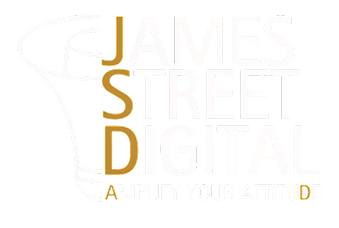
Crafting Cross-Platform Social Media Campaigns That Actually Work
Social media is chaotic. Managing one platform is tough, but managing multiple? That’s a new level of mayhem. But if you’re serious about audience engagement and business growth, you don’t get to skip cross-platform marketing. Why? Your customers aren’t all hanging out in one place. They’re scrolling Instagram, watching YouTube videos, retweeting memes, and reading LinkedIn posts. You need to show up wherever they are, and show up well.
This guide will give you a direct breakdown of how to craft impactful cross-platform social media campaigns. Think actionable strategies, no fluff, and real-world examples that don’t waste your time.
What you’ll learn:
How to craft a cohesive campaign that works across platforms without copying and pasting content.
Proven methods to choose the right platforms for your audience.
A deep analysis of campaigns like Nike’s "Dream Crazier" and Wendy’s viral "Nuggs for Carter" challenge (what worked and what didn’t).
If you’re sick of aimless posting and minimal reach, pay attention.
Understanding Your Audience Across Platforms
Think all social media users are the same? Think again. Each platform attracts a unique demographic with specific behaviors. Your campaigns will flop if you don’t take time to understand who is on each platform and how they use it.
How to Analyze Demographics and Behavior
Start with these essential tools to grasp audience behaviors:
Facebook Insights: Breaks down gender, age, location, and even device usage for your audience.
LinkedIn Analytics: Find out what job titles and industries resonate with your content. Great for B2B.
Google Analytics Social Reports: Tracks referral traffic and audience interactions from various platforms.
Sprout Social or Hootsuite Analytics: Offers a bird’s-eye view of your audience across platforms.
Know Your Platforms
Here’s a quick snapshot:
Instagram: Skews heavily towards 18–34 years old. Perfect for visual, aesthetic-driven content.
LinkedIn: Home to professionals and decision-makers. Ideal for thought leadership and B2B content.
Twitter: Great for trending topics, bite-sized content, and witty responses. If it can’t fit in 280 characters, rethink it.
TikTok: If Gen Z is part of your target market, you better be here. Creativity and humor reign supreme.
Pro Tip: Use surveys or customer feedback polls to refine your understanding. If you're still winging it, stop right now. Understanding your audience is non-negotiable.
Crafting Cohesive Campaign Messages Don’t Post the Same Thing Everywhere
This needs to be said louder for the people in the back. Posting the exact content everywhere is lazy, ineffective, and screams "I don’t care about this platform’s culture."
Tailor your brand message without losing consistency. If your campaign message is "Empower your mornings with XYZ Product," here’s how to adapt it per platform:
Instagram: Share an aesthetically pleasing morning ritual tied to your product.
Twitter: Post a catchy one-liner, "Your mornings called, they need XYZ."
LinkedIn: Publish a thoughtful post on how morning routines impact productivity, weaving in your product subtly.
Consistency doesn’t mean carbon-copied content, it means brand voice.
The 4 "F"s of Platform-Adaptive Messaging:
Format - Images rule Instagram, but text should take center stage on LinkedIn.
Frequency - Post multiple times a day on Twitter; reign it in to once daily on Instagram.
Focus - Informal tones on TikTok and Twitter, polished professionalism on LinkedIn.
Function - Expect engagement on Instagram, but take advantage of LinkedIn for networking.
Platform Selection and Strategy
More platforms don’t mean more success. Be selective. Choosing the wrong ones wastes time and resources.
Step 1: Know Your Campaign Goal
Awareness: Instagram & YouTube dominate visual discovery.
Engagement: Twitter & TikTok for rapid, authentic interaction.
Conversions: Facebook Ads and Pinterest drive direct sales.
Step 2: Select Strategic Platforms
Avoid spreading thin. Nail three platforms that align with your goals and audience, rather than halfway posting across ten.
Step 3: Integration Strategies
Use teaser posts on Instagram to drive traffic to longer LinkedIn thought pieces or full YouTube videos. Cross-promotions work when deliberate, not forced.
Content Creation and Scheduling Create For The Platform
Cut-and-paste strategies die hard, but you’re smarter than that.
TikTok content should be casual, fun, and authentic.
LinkedIn posts demand insight and straightforward utility.
Instagram thrives on visually stunning aesthetics.
Scheduling Tools Make You Smarter
A few tools you should absolutely use:
Later: Fantastic for scheduling Instagram and Pinterest posts.
Buffer: Great for all your platforms in one place.
Canva: A lifesaver for non-designers.
Metrics and Evaluation
Don’t just shout into the void. Measure. Adjust. Win.
Key Metrics by Campaign Goals:
Awareness: Track impressions, reach, and follower growth.
Engagement: Look for shares, comments, retweets, and DMs.
Conversions: Measure clicks, leads, and repeat website visitors.
Analyze & Refine
Platforms like Google Analytics, Sprout Social, and SEMrush are non-negotiables. If something’s underperforming, pivot. This isn't failure, it's strategy.
Real-World Case Studies
Dig into these top-tier campaigns that nailed cross-platform strategies:
Nike’s "Dream Crazier": Used video storytelling on YouTube, inspiring photo captions on Instagram, and bold engagement tweets. Outcome? A revenue jump of 13%.
Airbnb’s "We Are Here": Showcased human-centric content, tailored perfectly for Facebook, Instagram, and LinkedIn. The result was a 25% positive bump in brand sentiment.
Wendy’s "Nuggs for Carter": Proof that Twitter challenges can turn into massive cross-platform virality, 3.5 million retweets, just like that.
These campaigns worked because the messaging felt cohesive yet tailored per platform.
Bring It All Together
Cross-platform campaigns aren’t optional if businesses want to compete in 2025. They’re mandatory. From understanding your audience’s behaviors to selecting platforms strategically, your campaign’s success depends on seamless cohesion without sacrificing individuality.
And if reading this made you feel overwhelmed, we’ve got your back. Speak to the team at James Street Digital, we eat cross-platform campaigns for breakfast. Reach out today to build marketing campaigns that convert, engage, and crush your KPIs.




